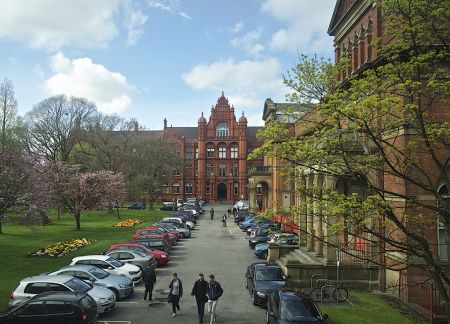
Send a selfie of your dog to help welfare research
Monday 10 September 2018
A MAJOR study into healthy ageing in dogs is seeking help from the public.
Scientists at the University of Salford are collecting hundreds of doggie selfies for a study of the tell-tale signs of stress in our pets.
Images sent to The Dogs’ Life Project should be face-on with both the dog’s eyes visible and include the dog’s gender, age, and ownership type*.
“We’ve collected more than 400 pictures so far and have hadgreat help from Greater Manchester Police’s dog unit and the Dogs Trust, but weneed a lot more,” explained PhD researcher Luisa Dutra.
Premature ageing
“The more we can collect, the better we can work out the factors leading to premature ageing and early death in dogs.”
The idea of the research is to identify anomalies between adog’s real age – its chronological age – and it’s state of health – itsbiological age.
The oldest recorded age for a dog is 29yrs, 5 months for Bluey, an Australian Cattle Dog
The photographs will be analysed by artificial intelligence to spot tiny details of ageing, including coloration of the fur, sagging jowls and brightness of the eyes.
The AI method means that simply by looking at a dog’s face in detail, the team can work out its biological age and compare it to its real age.
Rescue dogs
“It’s assumed that rescue dogs die earlier because they havehad a hard time in early life but that is not altogether proven,” explains Luisa
“What is certain is that dogs become stressed quite easily,for instance they may howl when separated from their owner – which is a signalof anxiety.
Did you know? Some dogs now live so long they develop dementia
The Salford team say that if they can measure the impact of certain stress and anxiety factors on a dog’s longevity, there can be better advice and what to avoid and also what to encourage.
They also believe that a system to gauge a dog’s biological age by facial scan, it could assist vets and the animal care industry.
“The more we know about what constitutes ‘the good life’versus ‘the dog’s life’ for our pets, the better our interventions can be to improve their care and welfare,” says Professor Robert Young.
“Our dogs can’t escape wear and tear but, like humans, we can help them limit the damage.”
* (adopted /1st owner / rescue dog /other).
Please send your dog selfie to: dogslifeproject@gmail.com
Find out more
Gareth Hollyman, Senior Press & PR Officer (Science)
0161 295 6895 g.b.hollyman@salford.ac.uk





